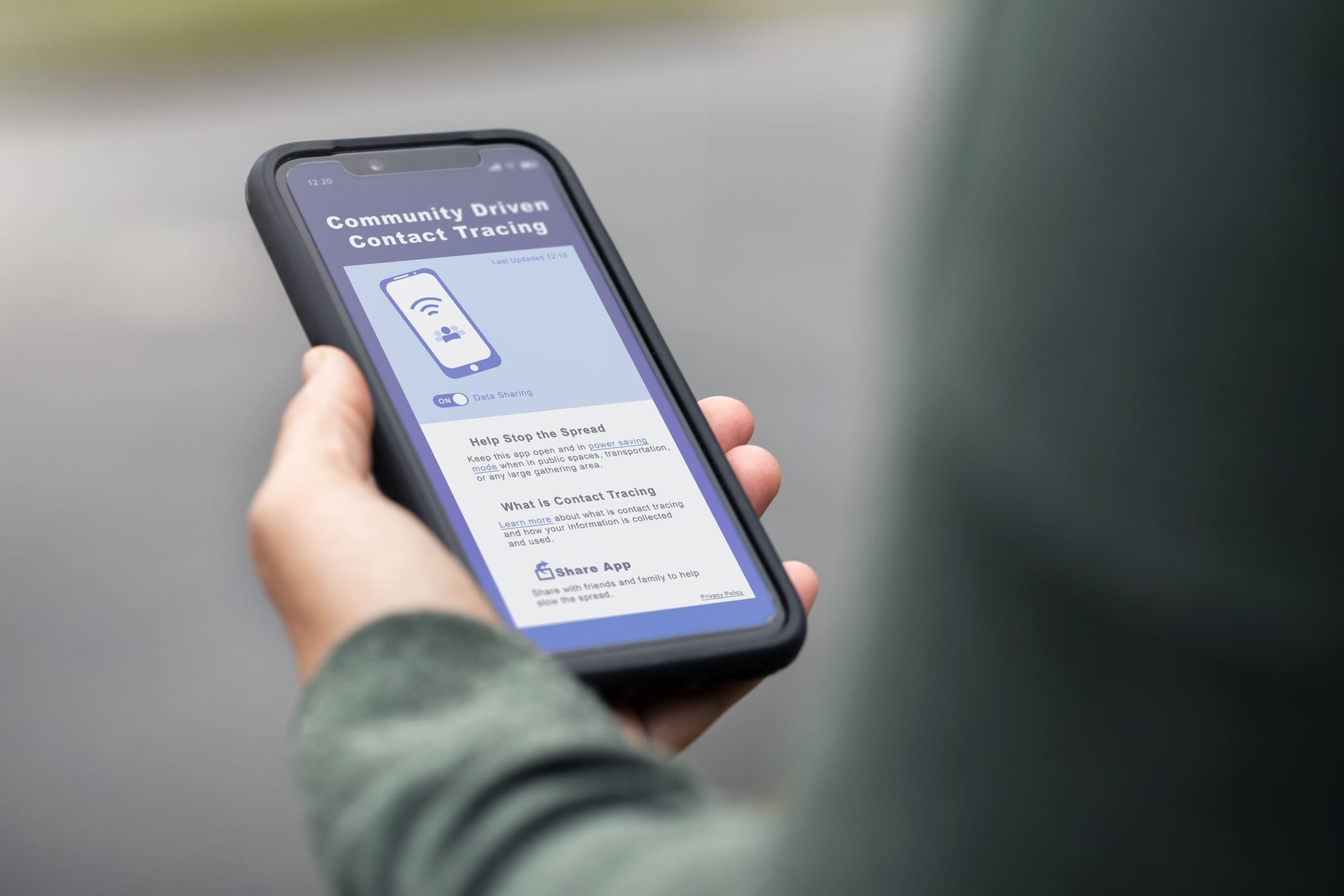Agritech Revolution: How Apps Are Transforming Traditional Farming
Have you ever wondered how farmers managed to feed entire communities using nothing but basic tools, instinct, and years of hard-earned experience passed down through generations? For centuries, agriculture remained largely unchanged—farmers would wake before dawn, check their crops by walking through fields, and make decisions based on what they could see and feel. But something interesting has happened in recent years. The same technology that lets you order pizza with a few taps on your phone is now helping farmers grow better crops, manage livestock more effectively, and run their businesses with precision that would have seemed impossible just a decade ago.
This shift towards AgriTech—technology designed specifically for farming—isn't just about fancy gadgets or showing off. It's about solving real problems that farmers face every single day. Problems like knowing exactly when to water crops, predicting weather patterns that could destroy an entire harvest, or keeping track of hundreds of animals across vast properties. Mobile apps have become the bridge between traditional farming knowledge and modern technology, putting powerful tools directly into farmers' pockets.
The future of farming isn't about replacing the farmer's expertise—it's about giving them superpowers to make that expertise even more effective
What makes this farming transformation so compelling is how it's happening from the ground up. Small-scale farmers in remote areas can now access the same sophisticated monitoring tools that large agricultural corporations use. Weather data, soil analysis, market prices, and livestock health tracking—all available through apps that work on basic smartphones. This isn't just changing how farming works; it's changing who can farm successfully and where they can do it.
What is AgriTech and Why Farming Apps Matter
AgriTech—short for agricultural technology—is simply the use of modern technology to help farmers grow crops and raise animals more effectively. Think smartphones, sensors, drones, and yes, mobile apps, all working together to make farming smarter and more efficient.
Now, you might wonder why farmers need apps when they've been growing food successfully for thousands of years. The answer lies in the challenges modern agriculture faces. Today's farmers need to feed more people than ever before whilst using fewer resources and dealing with unpredictable weather patterns. Traditional farming methods, whilst tried and tested, often can't keep up with these demands.
This is where farming apps come into play. These digital tools help farmers make better decisions by providing real-time information about their crops, livestock, and land. Instead of relying purely on experience and guesswork, farmers can now access precise data about soil conditions, weather forecasts, and market prices—all from their mobile devices.
Key Benefits of Agricultural Apps
- Increased crop yields through better monitoring and management
- Reduced waste of water, fertiliser, and other resources
- Lower operating costs through efficient planning
- Better disease and pest management
- Improved access to markets and fair pricing
- Enhanced record-keeping for compliance and analysis
The beauty of farming apps is their accessibility. A smallholder farmer with a basic smartphone can access the same type of technology that large commercial operations use. This democratisation of agricultural technology is helping to level the playing field and improve food security worldwide.
Smart Crop Monitoring—From Soil to Satellite
Gone are the days when farmers had to walk their entire fields every morning to check on their crops. Modern AgriTech has given us smart monitoring systems that keep watch 24/7, and honestly, the technology is quite impressive when you see it in action.
These monitoring apps connect to various sensors placed throughout the farm—soil moisture sensors, temperature gauges, and nutrient detectors that constantly measure what's happening beneath the surface. The data gets sent straight to a farmer's smartphone or tablet, showing real-time information about crop health, soil conditions, and growing patterns.
Ground-Level Monitoring
Soil sensors are the workhorses here. They measure moisture levels, pH balance, and nutrient content without farmers having to dig up samples manually. When the soil gets too dry or lacks specific nutrients, the app sends an alert. Some systems even connect directly to irrigation equipment, automatically watering crops when needed.
Satellite and Drone Integration
The real game-changer comes from above. Satellite imagery and drone technology now work together with ground sensors to create a complete picture of crop health. Farmers can spot problems like pest infestations, disease outbreaks, or uneven growth patterns from aerial views—often before these issues become visible from ground level.
- Real-time soil moisture and nutrient monitoring
- Automated irrigation system integration
- Satellite imagery for large-scale crop assessment
- Drone surveillance for detailed problem identification
- Growth pattern analysis and yield predictions
Start small with soil sensors in your most valuable crop areas before expanding to full-field monitoring—this approach helps you understand the technology whilst managing costs effectively.
This combination of ground sensors and aerial monitoring means farmers can make informed decisions quickly, often preventing small problems from becoming expensive disasters.
Weather Tracking and Climate Management Tools
Weather apps for farming aren't just about checking if it'll rain tomorrow—they're sophisticated tools that can make or break a harvest. Modern agricultural weather apps pull data from satellites, ground sensors, and weather stations to give farmers incredibly detailed forecasts that go weeks into the future.
The really clever bit is how these apps break down weather data specifically for farming needs. Instead of just showing temperature and rainfall, they track things like soil temperature, humidity levels, frost warnings, and growing degree days. Some apps even predict disease pressure based on weather conditions, which helps farmers decide when to apply treatments.
Real-Time Weather Monitoring Features
Today's weather apps don't just predict—they monitor conditions as they happen. Farmers can set up alerts for sudden temperature drops, incoming storms, or when conditions are perfect for planting or spraying. The GPS integration means you get hyper-local forecasts for your exact field location, not just the nearest town.
- Hourly rainfall predictions with radar mapping
- Frost and freeze warnings with exact timing
- Wind speed and direction for spray applications
- Soil moisture tracking through connected sensors
- Growing degree day calculations for crop development
- Disease and pest risk assessments based on weather patterns
What's particularly useful is how these apps learn from your specific location over time. They build up historical data for your farm, helping you spot patterns and make better decisions about planting dates, irrigation scheduling, and harvest timing. The integration with other farm management tools means weather data automatically feeds into your planning systems—no more switching between different apps to piece together the full picture.
Livestock Management Through Digital Solutions
Managing animals on a farm used to mean walking fields daily, keeping paper records, and relying on gut instinct to know when something wasn't right. These days, farmers are using apps and digital tools to keep track of their cattle, sheep, pigs, and chickens in ways that would have seemed like magic just a few decades ago.
Smart ear tags and collar sensors can now monitor an animal's health, location, and behaviour round the clock. These devices connect to mobile apps that alert farmers when a cow is ready for breeding, if a sheep has wandered too far from the flock, or when livestock aren't eating properly—which often signals illness before any visible symptoms appear.
Health Monitoring and Record Keeping
Digital livestock apps help farmers track vaccination schedules, breeding cycles, and medical treatments for hundreds or even thousands of animals. Instead of flipping through dusty notebooks, farmers can search their entire herd's history with a few taps on their phone screen.
The ability to spot health issues early through digital monitoring has reduced our veterinary costs by nearly thirty percent whilst improving animal welfare across the board
Automated Feeding and Environment Control
Some of the more advanced AgriTech solutions can automatically adjust feeding schedules based on weather conditions, animal weight, and production targets. Climate control systems in barns can be managed remotely through smartphone apps, ensuring animals stay comfortable whilst reducing energy costs. This level of automation allows farmers to spend less time on routine tasks and more time making strategic decisions about their operation.
Farm Equipment and Machinery Automation
Gone are the days when farmers had to manually control every piece of equipment on their land. Modern farming machinery now comes equipped with smart technology that can work independently, making decisions based on real-time data. This shift towards automated equipment is changing how farms operate daily.
GPS-guided tractors represent one of the most impressive developments in farm automation. These machines can plant seeds, spray crops, and harvest produce with pinpoint accuracy—often working through the night when farmers are asleep. The precision is remarkable; they can follow the exact same path every time, reducing waste and preventing damage to crops.
Key Automated Farm Equipment Features
- Self-steering tractors that follow pre-programmed routes
- Automated seed planters that adjust spacing and depth
- Smart harvesters that sort crops by quality
- Robotic milking systems for dairy farms
- Drone sprayers for targeted pesticide application
- Autonomous weeders that identify and remove unwanted plants
The beauty of these automated systems lies in their ability to collect data whilst they work. Every pass across a field generates information about soil conditions, crop health, and equipment performance. Farmers can access this data through mobile apps, allowing them to monitor their entire operation from anywhere.
Maintenance and Monitoring Benefits
Smart machinery doesn't just work independently—it also tells farmers when something needs attention. Predictive maintenance alerts help prevent costly breakdowns by warning when parts need replacing. This proactive approach saves both time and money, keeping farms running smoothly throughout busy seasons.
The integration between mobile apps and farm equipment creates a connected farming ecosystem where every machine communicates its status, location, and performance metrics in real-time.
Supply Chain and Market Access Applications
Getting crops from field to fork has always been one of farming's biggest headaches. Farmers might grow the best vegetables in the county, but if they can't sell them at the right price or get them to market on time, all that hard work goes to waste. That's where supply chain and market access apps come in—they're connecting farmers directly with buyers, retailers, and even consumers.
These apps work like digital marketplaces where farmers can list their produce and find buyers without going through multiple middlemen. Some apps focus on connecting farmers with local restaurants and cafés, whilst others help them reach supermarket chains or export markets. The best part? Farmers can see real-time pricing, compare offers, and negotiate deals all from their phone.
Tracking from Farm to Table
Modern supply chain apps don't just help with selling—they track products every step of the way. When a farmer harvests tomatoes, the app records when they were picked, how they were stored, and where they're heading. This traceability is becoming more important as consumers want to know exactly where their food comes from.
Look for supply chain apps that offer payment protection and dispute resolution services—this protects farmers from buyers who might not pay on time.
Breaking Down Barriers to Market
Small farmers often struggle to access bigger markets because they don't have the connections or volume that large buyers want. AgriTech apps are solving this by allowing multiple small farmers to group together and sell as one larger supplier. It's like having your own sales team working 24/7.
- Direct buyer connections without middlemen fees
- Real-time pricing and market demand data
- Group selling options for smaller farmers
- Quality certification and product tracking
- Integrated payment and logistics support
Financial Planning and Farm Business Management
Running a farm has always been about more than just growing crops or raising animals—it's a business that needs proper financial management. Traditional farmers often relied on spreadsheets, paper records, or simple accounting software that wasn't built for agricultural needs. Modern farming apps have changed this completely by offering tools designed specifically for the unique challenges of farm finances.
These apps help farmers track everything from seed costs to harvest profits in real-time. They can monitor expenses across different fields, calculate the true cost of production per acre, and even predict future cash flow based on planting schedules and market prices. Some apps connect directly to bank accounts and equipment systems, automatically recording transactions and fuel costs without any manual input.
What Farm Financial Apps Can Do
- Track crop production costs by field or livestock expenses by animal
- Generate profit and loss reports for different farming activities
- Monitor cash flow and predict seasonal financial needs
- Calculate return on investment for new equipment purchases
- Prepare tax documents and track deductible expenses
- Compare performance against industry benchmarks
The best part about these financial apps is how they integrate with other farm management tools. When your crop monitoring app records a pesticide application, it automatically updates your expense tracking. When livestock apps log feed consumption, the costs flow straight into your budget reports.
Making Better Business Decisions
Access to real financial data helps farmers make smarter decisions about their operations. Instead of guessing whether a new piece of equipment is worth buying, farmers can see exact numbers showing how it will affect their bottom line. They can identify which crops or livestock are most profitable and adjust their plans accordingly—turning farming from educated guesswork into data-driven business management.
Conclusion
The AgriTech revolution isn't coming—it's already here, and it's changing how we grow our food in ways that would have seemed like science fiction just a decade ago. From satellites monitoring crop health to apps that help farmers sell directly to customers, technology is making farming smarter, more efficient, and dare I say it, more exciting than ever before.
What strikes me most about this farming transformation is how it's solving real problems that farmers have faced for generations. Weather unpredictability? There's an app for that. Livestock getting sick without warning? Sensors can spot problems before they become disasters. Struggling to get fair prices for crops? Digital marketplaces are connecting farmers directly with buyers. It's practical technology that actually makes a difference.
The beauty of AgriTech lies in its accessibility—you don't need a computer science degree to use most of these farming apps. They're designed to be simple enough that anyone can pick them up and start improving their farm operations immediately. Whether you're managing a small family farm or overseeing thousands of acres, there are digital tools that can help you make better decisions, save money, and increase your yields.
As we look ahead, the potential for further innovation seems limitless. The farmers who embrace these technologies now aren't just keeping up with the times—they're positioning themselves to thrive in an industry that's becoming more data-driven and connected every day. The transformation is real, and it's helping feed the world more efficiently than ever before.
Share this
Subscribe To Our Blog
You May Also Like
These Related Stories

How Voice Technology Can Transform Your Customer Experience

Why Traditional App Development Methods Are Letting Businesses Down





